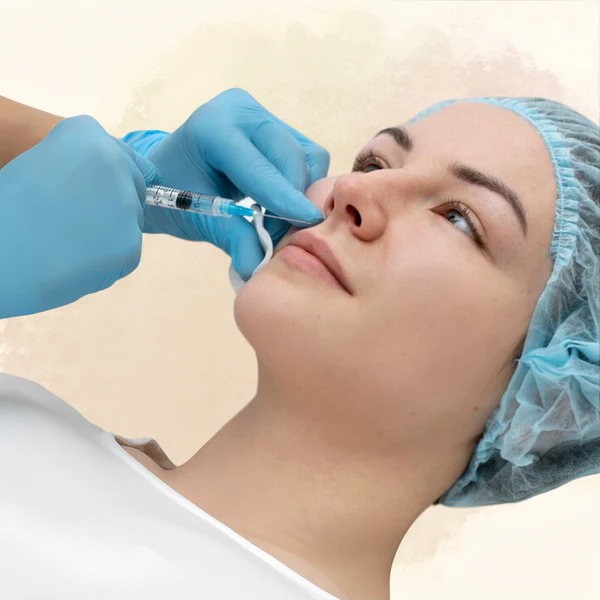Lifestyle Changes to Manage Gynecomastia
- Huda Batool
- Jan 21
- 4 min read
ynecomastia, the condition characterized by the enlargement of male breast tissue, can significantly impact a person’s self-esteem and overall quality of life. While it can often be treated medically or surgically, lifestyle changes can play a vital role in managing the symptoms and improving outcomes. Adopting a healthy lifestyle is one of the most effective ways to manage Gynecomastia Surgery Cost Dubai, whether it’s caused by hormonal imbalances, obesity, or other contributing factors. In this article, we explore key lifestyle modifications that can help alleviate the symptoms of gynecomastia.
1. Healthy Diet
A balanced diet can have a profound impact on managing gynecomastia. Maintaining a healthy weight is crucial, as excess body fat can contribute to hormonal imbalances that exacerbate the condition. Here are some dietary tips to help:
Balanced Macronutrients: Include lean proteins (chicken, fish, tofu, legumes), healthy fats (avocados, nuts, seeds, olive oil), and complex carbohydrates (whole grains, fruits, vegetables) in your meals. This helps in maintaining hormonal balance and controlling fat accumulation.
Minimize Sugary Foods: High sugar consumption can lead to insulin resistance and hormonal disruptions, which might worsen gynecomastia. Reducing sugar intake can help stabilize blood sugar levels.
Increase Fiber Intake: Foods rich in fiber, like fruits, vegetables, and whole grains, help regulate digestion and can improve hormone levels, aiding in the reduction of excess breast tissue.
Stay Hydrated: Drinking plenty of water helps maintain healthy hormone levels and flushes out toxins from the body.

2. Regular Exercise
Regular physical activity can be one of the most effective ways to manage gynecomastia. Exercise not only helps with weight loss but also promotes the development of lean muscle mass, which can reduce breast tissue prominence.
Cardiovascular Exercises: Engaging in activities like running, cycling, swimming, and brisk walking helps burn excess calories and fat, which may lead to the reduction in fat deposits around the chest.
Resistance Training: Incorporating strength training exercises like push-ups, bench presses, and resistance band workouts can help build chest muscles, making the chest appear firmer and more defined, which can reduce the visibility of gynecomastia.
Consistent Physical Activity: Aim for at least 150 minutes of moderate aerobic exercise or 75 minutes of vigorous exercise per week. Regular workouts can help improve hormonal balance, reduce body fat, and tone muscles.
3. Hormonal Balance
Hormonal imbalances are a common cause of gynecomastia. Maintaining hormonal balance is essential to managing the condition. Here are a few steps to help support hormonal health:
Limit Alcohol Consumption: Alcohol can disrupt hormone levels and lead to increased fat storage in the chest area. Reducing alcohol intake can help stabilize hormone levels.
Adequate Sleep: Quality sleep is essential for hormonal regulation. Poor sleep can lead to hormonal imbalances, particularly in testosterone and estrogen levels, which may worsen gynecomastia.
Stress Management: High-stress levels can trigger the production of cortisol, a hormone that can lead to fat accumulation, including in the chest area. Incorporate stress-reduction techniques like meditation, yoga, or deep breathing exercises into your daily routine.
Consider Nutritional Supplements: Certain supplements like zinc, magnesium, and vitamin D can help support hormone production and balance.
4. Weight Management
Excess body weight, particularly abdominal fat, can lead to the development or exacerbation of gynecomastia. Losing weight through a combination of diet and exercise can significantly improve symptoms.
Monitor Caloric Intake: Consume fewer calories than your body expends to create a calorie deficit. This promotes fat loss, including in the chest area.
Focus on Lean Mass Retention: Ensure that you’re losing fat, not muscle. This can be achieved by combining resistance training with a moderate caloric deficit.
Set Realistic Goals: Aim for sustainable weight loss. Rapid weight loss can lead to loose skin, which may exacerbate the appearance of gynecomastia.
5. Avoid Hormonal Disruptors
Some lifestyle habits can expose individuals to hormonal disruptors, which can worsen gynecomastia. Minimizing exposure to these disruptors is key:
Avoid Endocrine Disrupting Chemicals (EDCs): Many household products, such as plastics (BPA), pesticides, and certain skincare products, contain EDCs that can mimic estrogen in the body. Opt for organic foods, glass or stainless-steel containers, and non-toxic skincare and cleaning products.
Check Medications: Some medications, including anabolic steroids and certain prescription drugs, can contribute to hormonal imbalances that lead to gynecomastia. Discuss any medication concerns with your healthcare provider.
6. Psychological Support
Gynecomastia can have significant Gynecomastia Surgery Cost In Dubai, impacting self-esteem and mental health. Seeking psychological support can be beneficial:
Counseling: Professional counseling can help individuals cope with body image issues and the emotional impact of gynecomastia.
Join Support Groups: Engaging with others who have the same condition can provide emotional support, practical advice, and reduce feelings of isolation.
Mindfulness Practices: Practices like mindfulness and self-compassion can help manage stress and improve body image.
Conclusion
Managing gynecomastia is a multi-faceted approach that combines dietary changes, exercise, hormonal balance, weight management, avoiding disruptors, and psychological support. By making these lifestyle adjustments, individuals can improve their overall health, reduce symptoms, and enhance their quality of life. Always consult with a healthcare provider for personalized guidance, especially when considering surgical or medical interventions. With patience, persistence, and the right approach, significant progress can be made in managing gynecomastia effectively.








Comments